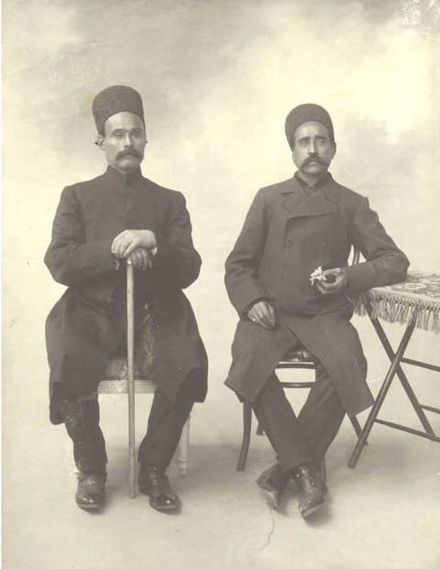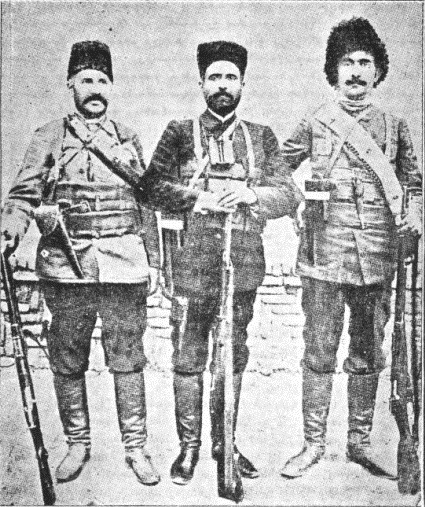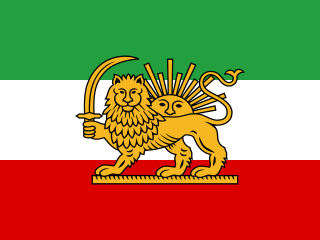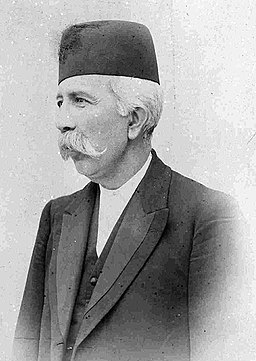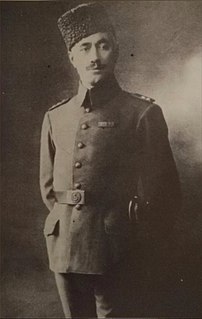It has been requested that the title of this article be changed to Persian Constitutional Revolution . Please see the relevant discussion on the discussion page. Do not move the page until the discussion has reached consensus for the change and is closed. |
This article needs additional citations for verification .(August 2009) (Learn how and when to remove this template message) |
| Persian Constitutional Revolution | |||||
|---|---|---|---|---|---|
| Part of Attempts at Constitutionalization in Iran | |||||
 The royal proclamation of Mozaffar ad-Din Shah that agree the Constitutional monarchy on August 5, 1906. | |||||
| Date | 1905–1911 | ||||
| Location | Iran | ||||
| Resulted in |
| ||||
| |||||
| Lead figures | |||||
The Persian Constitutional Revolution (Persian : مشروطیتMashrūtiyyat, or انقلاب مشروطه [10] Enghelāb-e Mashrūteh), also known as the Constitutional Revolution of Iran, took place between 1905 and 1911. [11] The revolution led to the establishment of a parliament in Persia (Iran) during the Qajar Dynasty. [11] [12]

Persian, also known by its endonym Farsi, is one of the Western Iranian languages within the Indo-Iranian branch of the Indo-European language family. It is primarily spoken in Iran, Afghanistan, and Tajikistan, Uzbekistan and some other regions which historically were Persianate societies and considered part of Greater Iran. It is written right to left in the Persian alphabet, a modified variant of the Arabic script.
Contents
- History
- Context
- First protests
- Creation of the constitution
- Aftermath
- Notable individuals
- Constitutionalists
- Monarchists
- Religious leaders
- See also
- References
- Sources
- Further reading
- External links
The Revolution opened the way for cataclysmic change in Persia, heralding the modern era. It saw a period of unprecedented debate in a burgeoning press. The revolution created new opportunities and opened up seemingly boundless possibilities for Persia’s future. Many different groups fought to shape the course of the Revolution, and all sections of society were ultimately to be in some way changed by it. The old order, which king Nassereddin Shah Qajar had struggled for so long to sustain, finally died, to be replaced by new institutions, new forms of expression, and a new social and political order.
The monarch Mozaffar ad-Din Shah Qajar signed the constitution in 1906, but he died shortly after and was replaced by Mohammad Ali Shah. The latter abolished the constitution and bombarded the parliament with Russian and British support in 1908. This led to another pro-constitutional movement. The constitutionalist forces marched to Tehran, forced Muhammad Ali Shah's abdication in favor of his young son Ahmad Shah Qajar and then re-established the constitution in 1909. The "1921 Persian Coup" (Persian: کودتای ۳ اسفند ۱۲۹۹) refers to several major events in Iran (Persia) in 1921, which eventually led to the establishment of the Pahlavi dynasty as the ruling house of the country in 1925. On December 12, 1925, Iran's parliament amended Iran's constitution of 1906–1907 to replace the Qajar dynasty (1797–1925) with the Pahlavi dynasty as the legitimate sovereigns of Iran. [13]
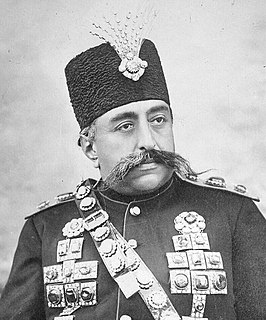
Mozaffar ad-Din Shah Qajar,, was the fifth Qajar king of Persia (Iran), reigning from 1896 until his death in 1907. He is often credited with the creation of the Persian constitution, which he approved of as one of his final actions of Shah.
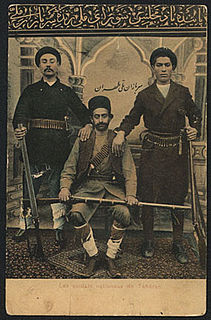
The Persia Constitution of 1906, was the first constitution of Persia (Iran) that resulted from the Persian Constitutional Revolution and it was written by Hassan Pirnia, Hossein Pirnia, and Ismail Mumtaz, among others. It divides into five chapters with many articles that developed over several years. The Belgian constitution, like the constitutions of other European states, served as a partial model for the Iranian constitution.
The 1908 bombardment of the Majlis of Iran took place on 23 June 1908 in Tehran, during the Iranian Constitutional Revolution, when the Persian Cossack forces, commanded by Vladimir Liakhov and the other Russian officers, bombarded and by that suppressed the Iranian parliament, the Majles.
The movement did not end with the Revolution being put down in 1911 by the Russians, but was followed by the Jungle Movement of Gilan (1914-1921).
The Jangal (Jungle) Movement, in Gilan, was a rebellion against the monarchist rule of the Qajar central government of Iran. It lasted from 1915 to 1921.






